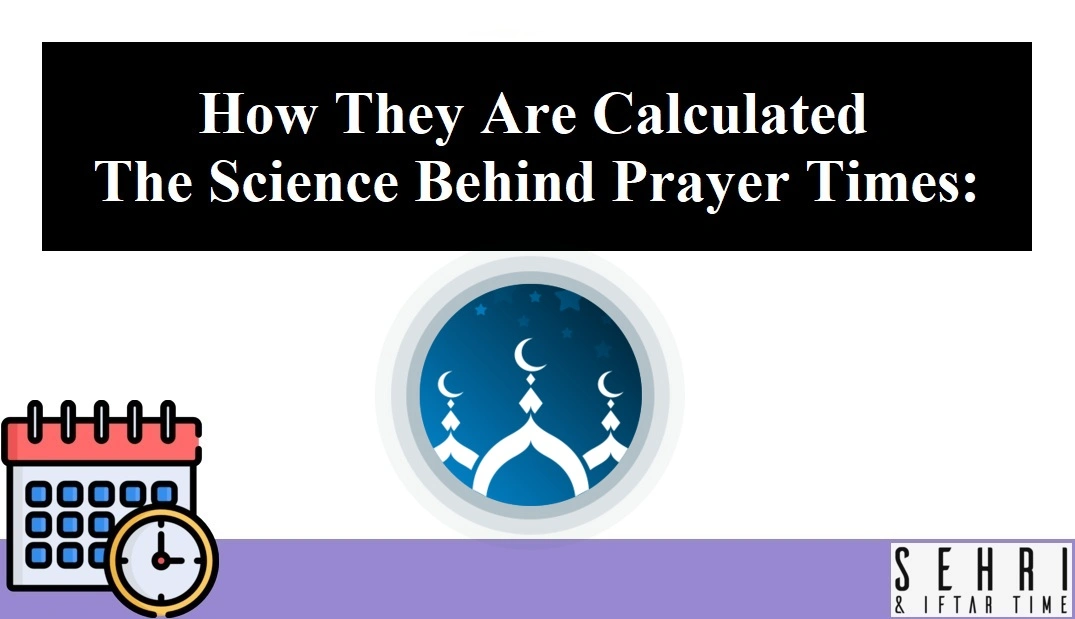The Science Behind Prayer Times: How They Are Calculated
The Science Behind Prayer (Salah) Times: How They Are Calculated

The Science Behind Prayer Times: How They Are Calculated: Prayer (Salah) holds a central place in Islam, serving as a daily practice that fosters spiritual discipline and a deeper connection with Allah. One of the unique features of Salah is its strict observance at specific times, which are intrinsically tied to the natural movements of celestial bodies, particularly the sun. Understanding how these prayer times are calculated not only deepens one’s appreciation for the precision and harmony of Islamic worship but also showcases the intersection of faith and science.
This article delves into the fascinating science behind prayer times, unraveling how they are determined and why they play a significant role in a Muslim’s life.
The Role of Astronomy in Determining Prayer Times
The Islamic method of determining prayer times relies on astronomy and the natural progression of the sun across the sky. Unlike fixed times on a clock, prayer times are based on observable changes in the environment, aligning worship with the natural rhythms of the Earth. This connection fosters mindfulness and a sense of divine timing in daily life.
The sun’s position throughout the day serves as the primary indicator for each of the five daily prayers:
- Fajr (Dawn): This prayer is observed at the break of dawn when the first light appears on the horizon before sunrise. Astronomically, this marks the time when the sun is approximately 18 degrees below the horizon.
- Dhuhr (Noon): The midday prayer begins shortly after the sun has crossed its zenith (the highest point in the sky) and starts its descent westward.
- Asr (Afternoon): This prayer’s time is determined by the length of an object’s shadow. According to most scholars, Asr begins when an object’s shadow is equal to or twice its original length, depending on the chosen interpretation.
- Maghrib (Sunset): The evening prayer begins immediately after the sun sets and continues until the red twilight disappears.
- Isha (Night): The night prayer begins when the twilight has completely vanished, and darkness fully sets in. This occurs when the sun is approximately 18 degrees below the horizon.
These calculations require a keen understanding of astronomy, as the sun’s position changes based on geographical location, season, and time of year.
The Tools and Methods of Calculation
Historically, Muslims relied on observational methods to determine prayer times. They would observe the shadows of objects, the movement of the sun, and changes in the horizon’s light. Mosques often employed a muezzin, who would announce the call to prayer (adhan) based on these observations.
Today, advancements in science and technology have made it easier to calculate prayer times with remarkable accuracy. Here’s how it’s done:
- Mathematical Algorithms: Modern algorithms use astronomical data to calculate the sun’s position at any given moment. These algorithms consider factors such as latitude, longitude, altitude, and time zone.
- Prayer Timetable Software: Islamic organizations and developers have created software that generates daily, monthly, or yearly prayer timetables for any location on Earth. These tools integrate astronomical data with Islamic criteria for prayer timing.
- Mobile Applications: Apps like Muslim Pro and IslamicFinder use GPS technology to provide real-time prayer times. These apps also account for local variations and daylight saving time.
- Islamic Calendars: Many Islamic centers and mosques publish prayer calendars, offering Muslims a reliable reference for observing Salah on time.
The Importance of Accuracy in Prayer Times
Accurate prayer times are essential for maintaining the sanctity of Salah. Since each prayer has a designated window, offering it outside its specified time nullifies the act’s validity. Therefore, precise calculations ensure that Muslims fulfill this obligation correctly.
Moreover, prayer times vary significantly based on geographical location. For instance, regions closer to the poles experience prolonged periods of daylight or darkness during certain seasons, complicating the determination of prayer times. Scholars have established specific rules and guidelines to address such situations, ensuring that Muslims in these areas can still observe their prayers properly.
The Spiritual Connection to Celestial Movements
Islam’s emphasis on aligning worship with natural phenomena highlights the religion’s deep appreciation for the universe’s order. The Quran repeatedly invites believers to reflect on the creation of the heavens and the Earth:
“It is He who made the sun a shining light and the moon a derived light and determined for it phases…” (Surah Yunus, 10:5)
By observing prayer times based on celestial movements, Muslims are reminded of Allah’s greatness and the intricate balance of His creation. This alignment fosters a sense of humility and awe, transforming daily prayers into moments of spiritual renewal and gratitude.
Common Challenges and Solutions
While modern tools have simplified the calculation of prayer times, certain challenges remain:
- High Latitudes: In areas with extended daylight or nighttime hours, such as Scandinavia, traditional methods of calculating prayer times may not apply. Scholars recommend using the timings of the nearest location with standard day-night cycles or adopting a fixed timetable.
- Travel: Muslims on the move may find it difficult to determine prayer times. Mobile apps with GPS integration provide a convenient solution, ensuring travelers can observe Salah on time.
- Local Variations: Differences in interpretations, such as the degree of twilight for Fajr and Isha, may lead to slight variations in prayer times. Consulting local mosques or Islamic authorities helps resolve these discrepancies.
Conclusion
The science behind prayer times is a testament to the harmony between faith and reason in Islam. By relying on the precise movements of celestial bodies, Muslims align their daily worship with the natural rhythms of the universe, fostering a deeper connection with Allah and His creation.
Understanding how prayer times are calculated enriches one’s spiritual journey, transforming Salah into more than an act of worship—it becomes a conscious acknowledgment of the Creator’s greatness. Whether through traditional observation or modern technology, the commitment to accurate prayer times reflects the devotion, discipline, and mindfulness at the heart of Islam.





